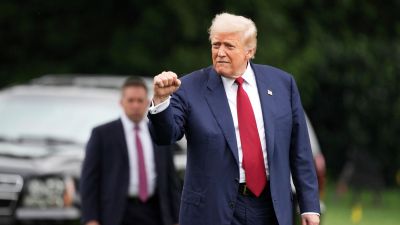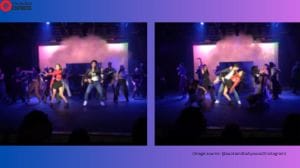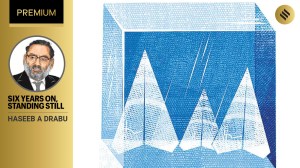KNOW YOUR CITY: Vadodara’s Darbar Hall – slated to host Prime Minister Narendra Modi, his Spanish counterpart Pedro Sánchez tomorrow
Built in 1890 as part of the awe-inspiring Lukshmi Villas Palace – the world’s largest private residence, which is said to be four times bigger than Buckingham Palace – the Darbar Hall is the most exquisite part of the magnificent Indo-Saracenic architecture
 Built in 1890 as part of the awe-inspiring Palace – the world’s largest private residence, which is said to be four times bigger than Buckingham Palace. (Express Photo)
Built in 1890 as part of the awe-inspiring Palace – the world’s largest private residence, which is said to be four times bigger than Buckingham Palace. (Express Photo)When Prime Minister Narendra Modi and Prime Minister of Spain Pedro Sánchez hold the ‘vital bilateral meeting’ on Monday at the grand Darbar Hall of the iconic Lukshmi Villas Palace in Vadodara, it would be the first meeting between the heads of state at the venue since India’s Independence in 1947.
Built in 1890 as part of the awe-inspiring Palace – the world’s largest private residence, which is said to be four times bigger than Buckingham Palace – the Darbar Hall is the most exquisite part of the magnificent Indo-Saracenic architecture, spread over 5,000 square feet without a single pillar in the way. Every inch of the grand hall is a treat to the eyes and an artistic delight. The ivory shade of the walls is enhanced with a contrast of striking gold embellishments and a ceiling adorned with lacquer and geometrical patterns in shades of red and green. Under the ceilings are the best attractions of the hall – four stained-glass panels of 14 feet in height, depicting Indian mythology.
The hall also has Murano flooring, which was completed by 12 workmen from Murano over a period of six months. The hall also has five Venetian Chandeliers right under a line of ceiling lights. Manda Hingurao, Curator, Maharaja Fatehsingh Museum, says, “The line of ceiling lights are not functioning now but they were meant to light up the ceiling and the chandeliers below lit up the space. Under it is the unique Murano flooring and the seating arrangement was designed to have people face each other to see each other. The hall also had a map to mark who would sit in which position… The sandalwood arches and wooden balconies project in the Darbar Hall and were meant for the ladies in the family to view the proceedings.”
 Under the ceilings are the best attractions of the hall – four stained-glass panels of 14 feet in height, depicting Indian mythology. (Express Photo)
Under the ceilings are the best attractions of the hall – four stained-glass panels of 14 feet in height, depicting Indian mythology. (Express Photo)
It was in 2015 that the royal family unveiled one of the five restored Venetian chandeliers, restored by celebrated French chandelier restorer, Regis Mathieu.
Hingurao says, “The stained glass panels with Indian mythology are extremely rare. The four panels have depictions of Yashoda milking the cow, Ram-Krishna, Lord Vishnu, and Ram-Sita… Apart from this over a dozen Belgian stained glass panels also adorn the windows and are engraved with SRG emblem to signify Maharaja Sayajirao III Gaekwad’s initials.”
Although the Darbar Hall, blending Western, Oriental, and Indian elements, was designed by architect Major Charles Mant, it was finished by Robert Chisholm as Mant died by suicide for the fear that his designs had gone wrong. Hingurao says, “Mant, at that time, was working simultaneously on designing three palaces in India including (erstwhile) Baroda, Darbhanga, and Kolhapur. He thought his designs had gone wrong and ended his life. Chisholm took over and completed the palace and Darbar Hall.”
Hingurao adds that during his reign, Maharaja Sayajirao III organised community gatherings for his subjects at the hall apart from holding meetings with various rulers who came to meet the Maharaja. Hingurao says, “Maharaja Sayajirao III strongly believed that all religions are equal and thus organised community meals, especially during Basant Panchami, Rang Panchami, Eid and Diwali… There was also one event where people were invited to dress in their traditional costumes. Maharaja Sayajirao III also held dinners for Baroda College faculty as well as dignitaries. These used to be very large lunch gatherings. The tradition was discontinued after Maharaja Sayajirao III but it was restarted by Maharaja Ranjitsinh Gaekwad, who started music programs as part of his contribution to music and art.”
The most memorable performances at the Darbar Hall have been of Ustad Faiyaz Khan Saheb, the doyen of Agra gayaki, who was invited to be the court musician by Maharaja Sayajirao III in 1912. In 1914, Maharaja Sayajirao had also organised the Akhil Bharatiya Sangeet Sabha, inviting maestros like Ustad Inayat Ali Khan. “Almost all artists, including the legendary Gangubai Hangal, Kishori Amonkar, Bhimsen Joshi have performed during the time of Maharaja Ranjitsinh at the Darbar hall… We all remember an anecdote when Parveen Sultana was performing and the electricity went off, not a single person flinched. The performance went on, as enchanting as it could be. People continue to consider it to be a privilege to come to Vadodara and perform at Darbar Hall. It is also because it was Baroda state that founded the Performing Arts Faculty with Maula Bakhsh as Principal,” Hingurao says.
 Although the Darbar Hall, blending Western, Oriental, and Indian elements, was designed by architect Major Charles Mant, it was finished by Robert Chisholm as Mant died by suicide for the fear that his designs had gone wrong. (Express Photo)
Although the Darbar Hall, blending Western, Oriental, and Indian elements, was designed by architect Major Charles Mant, it was finished by Robert Chisholm as Mant died by suicide for the fear that his designs had gone wrong. (Express Photo)
Said to have the best acoustics, the hall even hosted all-night concerts called ‘Sampurna Ratri’, where aficionados came from across the state to listen to the masters.
The Darbar Hall has a special demarcation for dancers and performers, the tradition having begun in 1880 when Maharani Chimnabai I – the queen and first wife of Maharaja Sayajirao III brought along a troupe of dancers from Tanjore as part of her dowry. Although Maharani Chimnabai-I passed away at an early age in 1885, Baroda state got its heritage of Carnatic music and Bharatanatyam dancing style due to Chimnabai-I. Hingurao says, “The nritakis (dancers) brought by Chimnabai-I also taught the Bharatanatyam dance form to this part of India…”
Hingurao says that although dignitaries such as former prime ministers of India Late Indira Gandhi, Late Rajiv Gandhi as well as Prince Charles have visited the Lukshmi Villas Palace and the Darbar Hall during their tenure, PM Modi and PM Sanchez’s visit will be the first-ever meeting of two heads of state in a formal setting at the hall. Hingurao says, “The hall was the Darbar of the king and it was used by Maharaja Sayajirao III until 1939 as well as Maharaja Pratapsinhrao Gaekwad until the accession… But, this would be the first meeting of two heads of state.”
Maharaja Sayajirao III also held a special Darbar (gathering) for Mark Twain in 1902 while other distinguished visitors included Lord Chelmsford, the Viceroy of India from 1916 to 1921, Lord Irwin as well as His Highness General Gangasinhji of Bikaner, His Highness Jayachamarajendra Wadiyar of Mysore, and His Highness Hanumantsinhji of Jodhpur. During the reign of Maharaja Pratapsinhrao Gaekwad, the Marquis of Linlithgow, Lord Wavell, Maharaja Madhavrao Scindia of Gwalior, Chhatrapati Rajaram Maharaja of Kolhapur and Chhatrapati Maharaja Sahajiraje of Kolhapur had also visited the Darbar Hall.
The Darbar hall stands next to the Hathi Hall – the spot where the Maharajas would climb onto the elephant on a special occasion. The hall has carvings of elephants on the arches. The palace also includes the Pratap Shastragar, which displays the coveted collection of royal armour including the Navdurga sword, the Panchkula sword as well as swords of Guru Gobindsinhji and Chhatrapati Shivaji Maharaj in its collection. Weapons such as spears and chakras are also on display here. The corridors of the palace also have carvings of cows and the solar god Surya – an ancestral symbol of the Gaekwad family.












